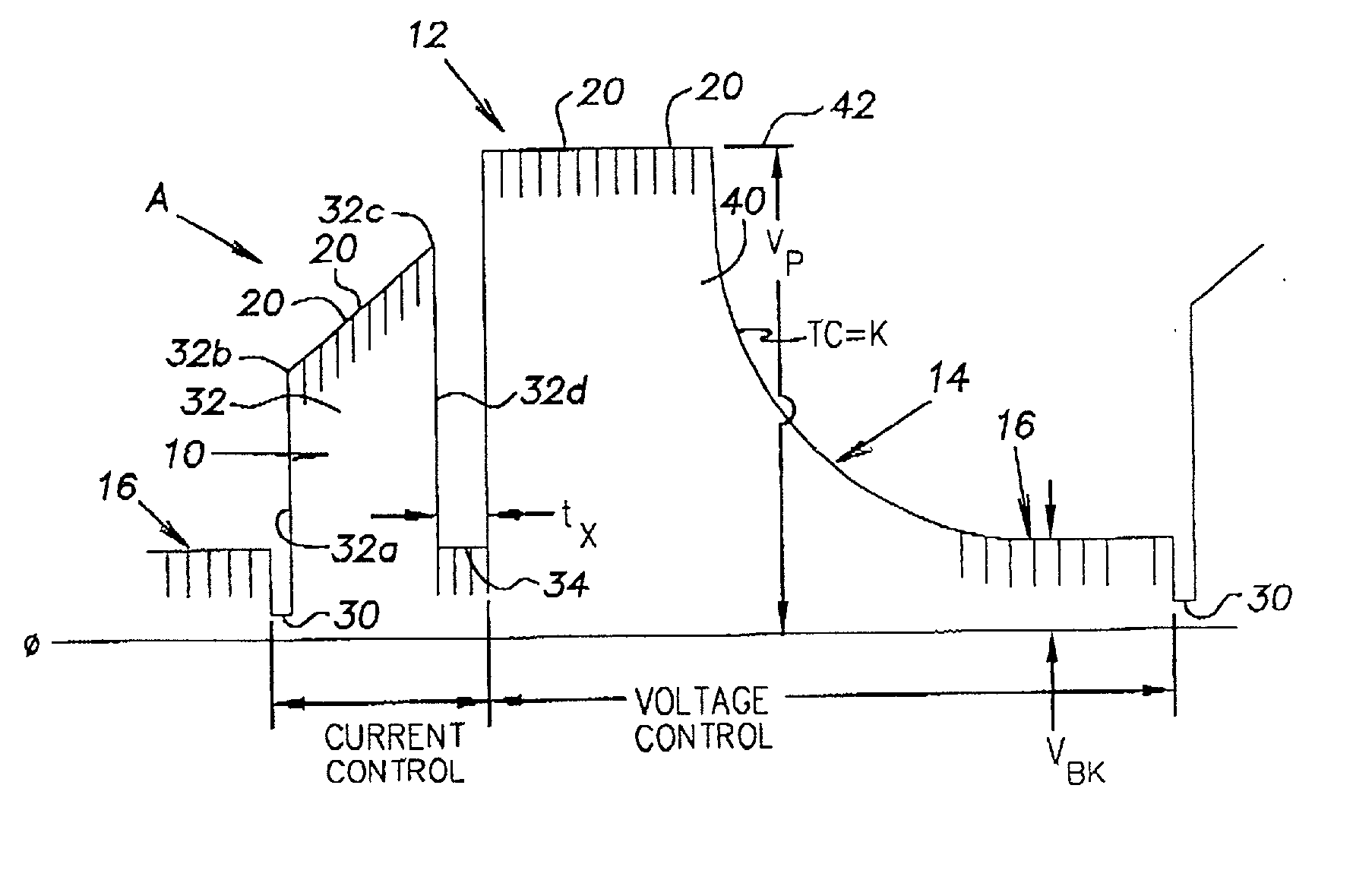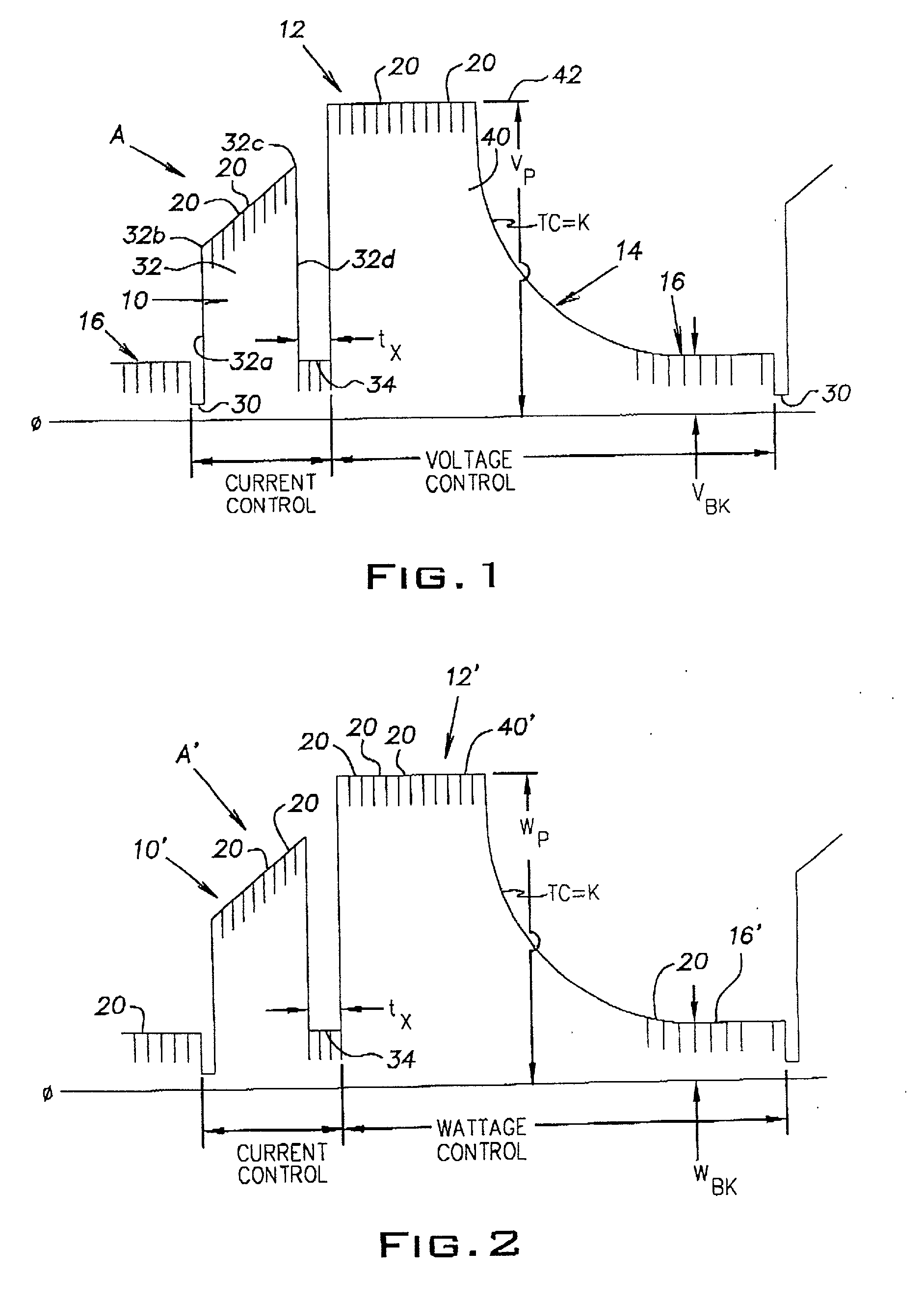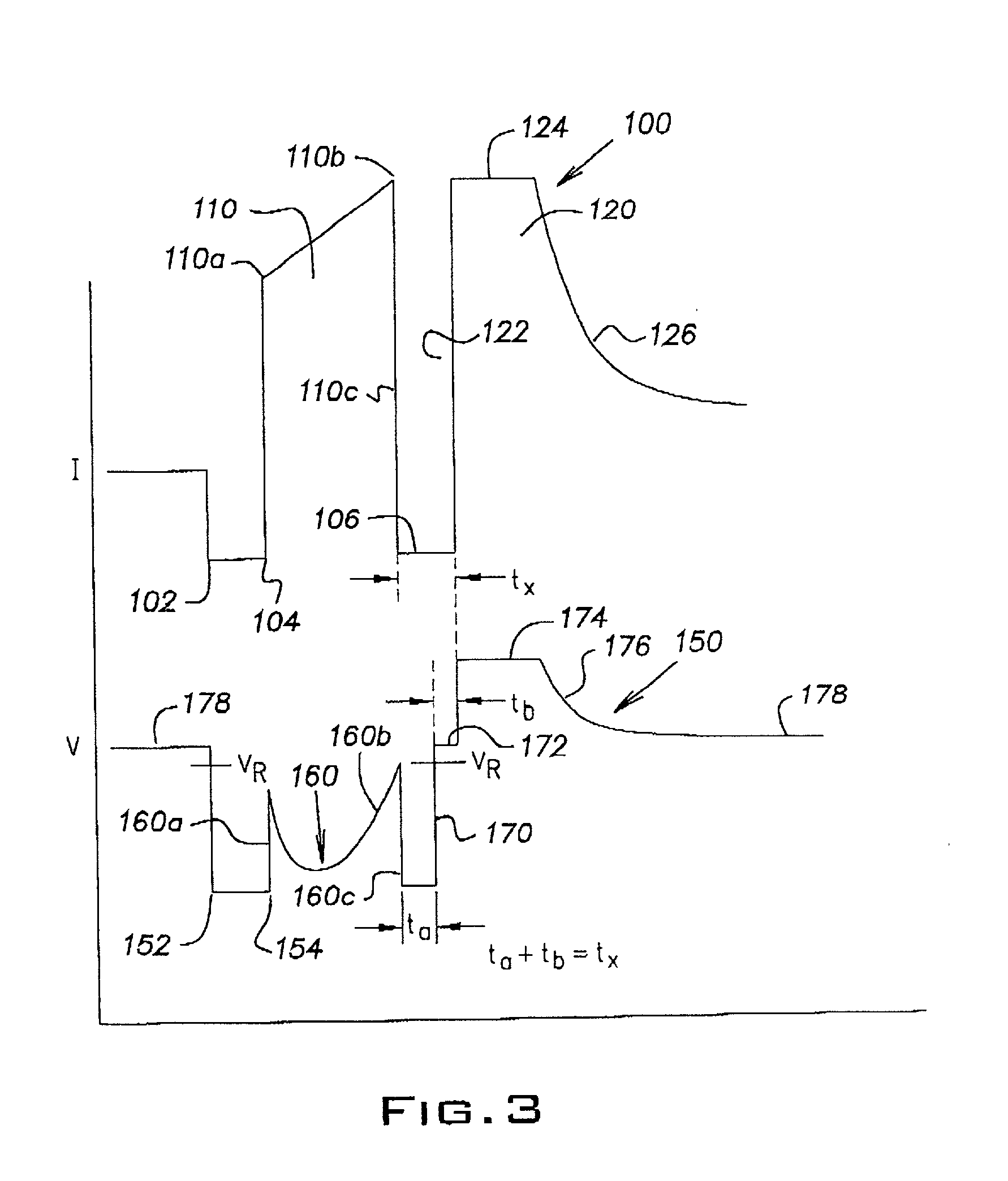Short circuit arc welder and method of controlling same
- Summary
- Abstract
- Description
- Claims
- Application Information
AI Technical Summary
Benefits of technology
Problems solved by technology
Method used
Image
Examples
Embodiment Construction
[0020] Referring now to the drawings wherein the showings are for the purpose of illustrating a preferred embodiment of the invention only, FIG. 1 shows an STT type waveform A for a short circuit welding process including a short condition 10, an arc condition 12, tailout 14 and background 16. This waveform is the current profile through the weld and is formed by a plurality of current pulses 20 created at a frequency exceeding 18 kHz. The widths of the current pulses control the magnitude or height of the waveform as illustrated in FIG. 1. Short circuit welding includes alternating between an arc or plasma condition and a short condition initiated at the time a molten metal ball on the end of an electrode contacts the workpiece. This event occurs at time 30. Metal is then transferred from the electrode to the workpiece by surface tension action. This action is accelerated by pinch pulse 32 used to control the current with a profile having a rapidly increasing current section 32a, a...
PUM
| Property | Measurement | Unit |
|---|---|---|
| Frequency | aaaaa | aaaaa |
| Current | aaaaa | aaaaa |
| Electric potential / voltage | aaaaa | aaaaa |
Abstract
Description
Claims
Application Information
 Login to View More
Login to View More - R&D
- Intellectual Property
- Life Sciences
- Materials
- Tech Scout
- Unparalleled Data Quality
- Higher Quality Content
- 60% Fewer Hallucinations
Browse by: Latest US Patents, China's latest patents, Technical Efficacy Thesaurus, Application Domain, Technology Topic, Popular Technical Reports.
© 2025 PatSnap. All rights reserved.Legal|Privacy policy|Modern Slavery Act Transparency Statement|Sitemap|About US| Contact US: help@patsnap.com



